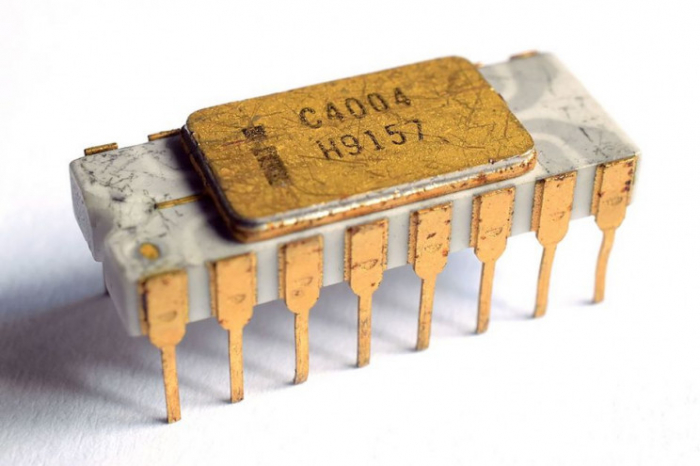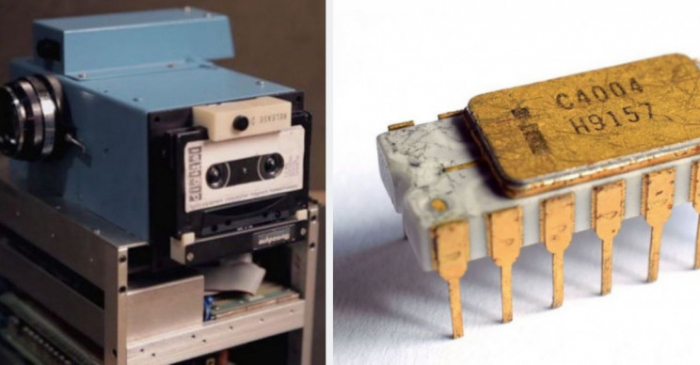Culture and technology exploded in the 1970s in the West, setting the stage for some of the most advanced products today. Technology and new products were churned out at a record rate in the 1970s producing some core items that you may find in your office, at home, and even at school.
Companies like Apple and IBM began to shape the way pop culture thought about computers and even data storage. You can thank this decade for things like the floppy disk and email. Think where you would be without these technologies. If you haven’t picked up on it already, today we are going to talk about the 1970s.
Ray Tomlinson sent the first email in 1971, an invention that you probably used today at some point. Remember ARPANET? Tomlinson and Bolt Beranek created the text-based messaging between computer through the ARPANET network using the “@” symbol to route messages.
However, there is some controversy in this story. Shiva Ayyadurai built an electronic messaging platform in 1978 when he was 14 years old, basing it off the internal communication system at the University of Medicine. Though the young inventor was eventually awarded the copyright for “EMAIL”, it is still disputed who actually invented the technology.
Mobile Phone
How would you celebrate creating the first cell phone? Invented by Motorola in 1973, senior engineer Martin Cooper called rival telecommunication company Bell Laboratories just to inform their rival that they were speaking through a mobile. Now this phone was nothing like the phone you might have in your hands right now and was definitely clunky, but for the time, it was impressive.
The Motorola DynaTAC 8000x weighed almost two and a half pounds and was a little over a foot in length. You could call up a friend and talk with them for 30 minutes, but it would take 10 hours to charge.
Intel 4004

In 1971, Intel released the first programmable microprocessor to the market, and it was dubbed the Intel 4004. Invented by Stanley Mazor, Federico Faggin, and Ted Hoff it was the first programmable commercially available microprocessor. Their invention would go on to earn them the National Medal of Technology and Innovation by US President Barack Obama.
Apple II

Love them or hate them, there is a good chance that you longed for an Apple product at some point during your childhood or in adulthood. At the very least, you shared some respect for Steve Wozniak or the controversial Steve Jobs. Following the Apple I, the Apple II would go on to set the trajectory of the company.
The Sony Walkman

The creation of the Walkman was a pop culture moment and would weave itself into the 1980s. Before your smartphone, Mp3 player, or CD player the Sony Walkman is where you would put all your songs for the summer. The product has become synonymous with portable music devices after it first entered the market in 1979.
The Rubik’s Cube
The Rubik’s Cube is one of the most popular toys in history. How many times have you fawned over some kid solving a Rubik’s Cube in under a minute? The toy was created by Erno Rubik a Hungarian architecture professor. Interestingly the Rubik’s Cube was used to present information about spatial relationships to his student in more interesting and more compelling ways.
Rubik never intended or expected that the cube would become a top-selling toy. In fact, he viewed his invention more like a piece of art.
The Digital Camera

The digital camera would lay the foundations for the camera that you use in your phone today. The first digital camera was invented by Kodak engineer Steven Sasson, however, like a lot of things on this list, it was bulky and massive, looking nothing like the digital camera that you may have grown accustomed to over the years.
The invention weighed about eight pounds and took 0.01-megapixel black-and-white photographs that were recorded onto a cassette tape. Even more so, the image took almost 23 seconds to take and needed to be connected to a television set.
Floppy Disk

If you grew up in the 90s or before, you definitely remember the floppy disk. Maybe you even used it to save your primary school projects. Created by IBM in 1971 the floppy disk was primarily used to distribute software, transfer data, and create backups. However, they were able to store 1.44MB.
LED Display Pocket Calculator
This calculator featured a state-of-the-art integrated circuit and LED display bringing the power of calculation to everyone’s pocket. The aim of this calculator was to make math easier for generations of people in the office and at school. However, the first calculator was not cheap costing $395.
interestingengineering.com
More about: inventions
















































